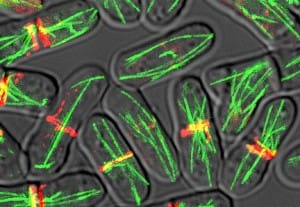
The nmt promoters display a strong induction fold after de-repression (estimated at ∼80-fold for nmt1 Basi et al., 1993), but their maximal induction time exceeds 15 h and is not completely synchronous in the population ( Maundrell, 1990 Watson et al., 2013). The most popular inducible promoter in fission yeast is based on the strong nmt1 (‘no message in thiamine’) promoter and its two attenuated versions that carry mutations in the TATA box – namely nmt41 and nmt81 ( Basi et al., 1993 Maundrell, 1990 Maundrell, 1993). A few integrative plasmids that should not lead to the formation of genomic copies have been developed, but their stability has not been directly probed ( Fennessy et al., 2014 Kakui et al., 2015). This is especially noticeable if the insert alters cell fitness, and can cause reproducibility issues between experiments. However, this system suffers from the problem that integration leads to duplication of sequences on either side of the integrated vector ( Siam et al., 2004), which can further recombine and lead to either amplification or deletion of the integrated fragment. Plasmid linearization within this region enables homology-directed repair to target the vector to the desired genomic location ( Keeney and Boeke, 1994 Matsuyama et al., 2004 Maundrell, 1993). The most common integrative vectors typically carry a single homology region. It also allows for integration of linearized ‘integrative’ plasmids, for instance containing foreign DNA, to placeholder genomic loci. This allows precise genome editing and direct gene manipulation at their native locus, the method of choice to alter gene function in near-physiological conditions. Second, because homologous recombination is highly efficient, linear DNA fragments can easily integrate at desired genomic loci. For this reason, such circular plasmids segregate randomly during division, leading to variable copy numbers in the population and the need for continuous selective pressure to prevent plasmid loss. cerevisiae ( Clarke, 1990 Yamagishi et al., 2014). pombe centromeres are complex 100 kb-long sequences, distinct from the point centromeres of the budding yeast S. However, these episomal plasmids do not contain centromeric segments, because S.
Fission yeast series#
the pREP series Craven et al., 1998 Forsburg and Sherman, 1997 Maundrell, 1993 Moreno et al., 2000). First, circular DNA plasmids can be maintained as episomal fragments, provided they contain an autonomous replicating sequence (ARS) (e.g. pombe cells, where they have one of two fates. Foreign DNA fragments are easily delivered to S.

The ability to transform cells with genetic material and create transgenic lines is critical in biological research. This article has an associated First Person interview with the first author of the paper. Finally, as proof of concept, we generate a large set of ready-to-use, fluorescent probes to mark organelles and cellular processes with a wide range of applications in fission yeast research. We expand the vector series to include antibiotic resistance markers, promoters, fluorescent tags and terminators, and build a highly modular toolbox to introduce heterologous sequences. Additionally, we develop a set of complementary auxotrophic alleles that preclude false-positive integration events.

SIVs produce non-repetitive, stable genomic loci and integrate predominantly as single copy. We overcome this problem by designing a new series of stable integration vectors (SIVs) that target four different prototrophy genes. Here, we show that commonly used fission yeast vectors, which upon integration produce repetitive genomic regions, give rise to unstable genomic loci. While vectors to incorporate exogenous sequences into the chromosomes are available, most are poorly characterized. Its popularity as an experimental system partially stems from the ease of genetic manipulations, where the innate homology-targeted repair is exploited to precisely edit the genome. Schizosaccharomyces pombe is a widely used model organism to study many aspects of eukaryotic cell physiology.


 0 kommentar(er)
0 kommentar(er)
